
I’ve been connecting with local bee keepers in the Western Cape of South Africa and Peter from A1 Honey who has been keeping bees for 30 years as part of a family tradition. Peter re connected with the practice after he retired from the Special Intelligence Unit in Cape Town. He harvests around four tons of honey a year and his honey is from eucalyptus, fynbos or multi-floral, operating his small business from his home and the backyard. He has a growing number of hives producing 4 tons a year and his hives are kept on farms within a 20 km radius of his home.
Beekeeping in your blood?
It goes way back in my family. My grandfather was a hunter and would come back from his trips with wild honey. He would trade wax for salt or other goods at the local store. In the 1950’s my mother was known as the ‘honey woman’ in her bowling club in the Eastern Cape. She would sell her excess honey to friends and neighbours. She sold 500g for 25cent back then and now we sell it for 55R. She lived to the ripe old age of 94. I grew up learning from my father also. Today I love nothing more than sitting in the veltd clearing my mind and taking in the peace. That’s where I would sit with my father as he coached me on beekeeping and life, drinking coffee and eating bread. I still miss him to this day.
The process
The honey comes in from the hives on frames, where you break the seal with a fork (Peter’s technique, beekeepers have their own ways of doing things).
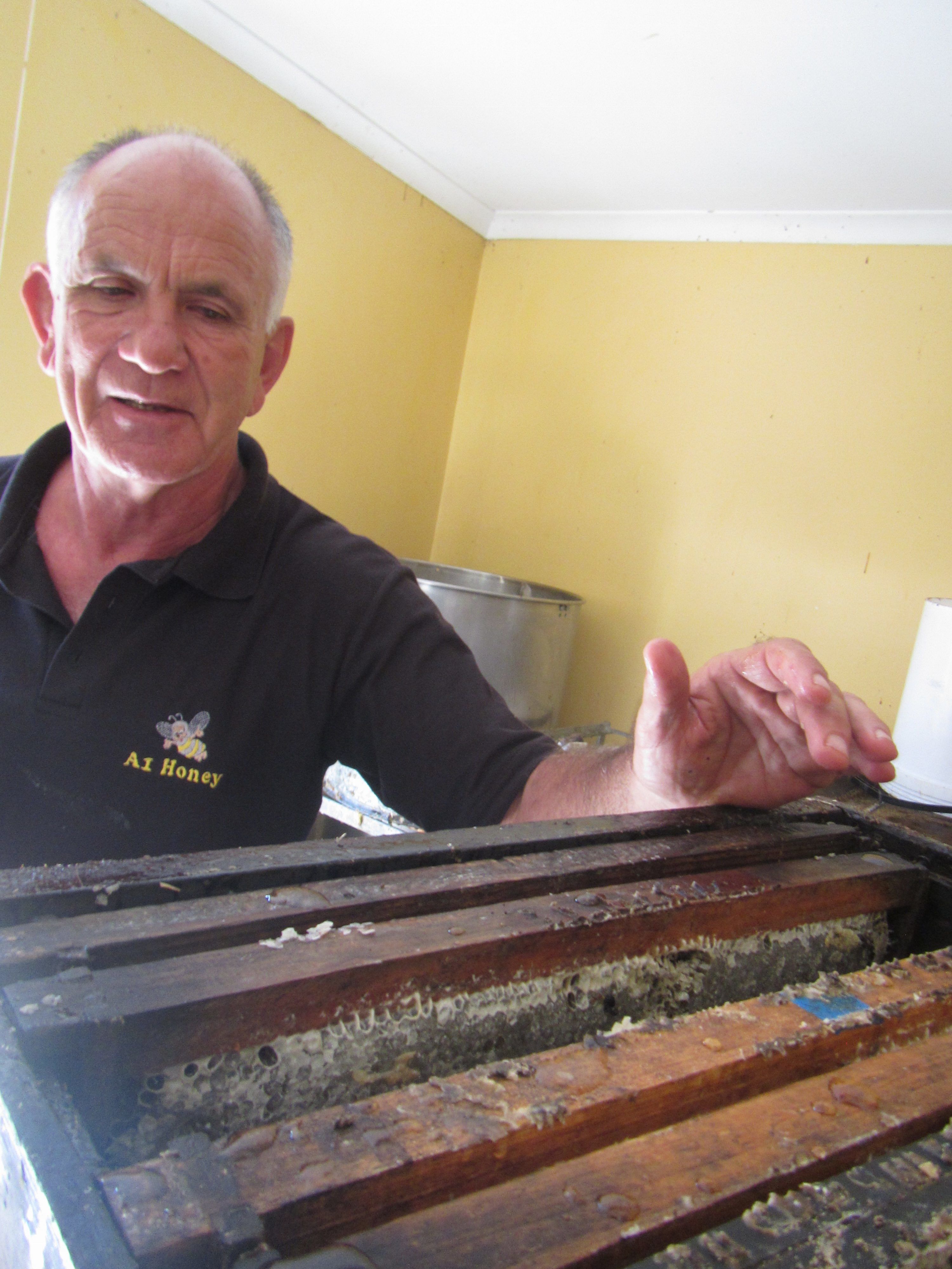
Peter with the frames brought in from the hives
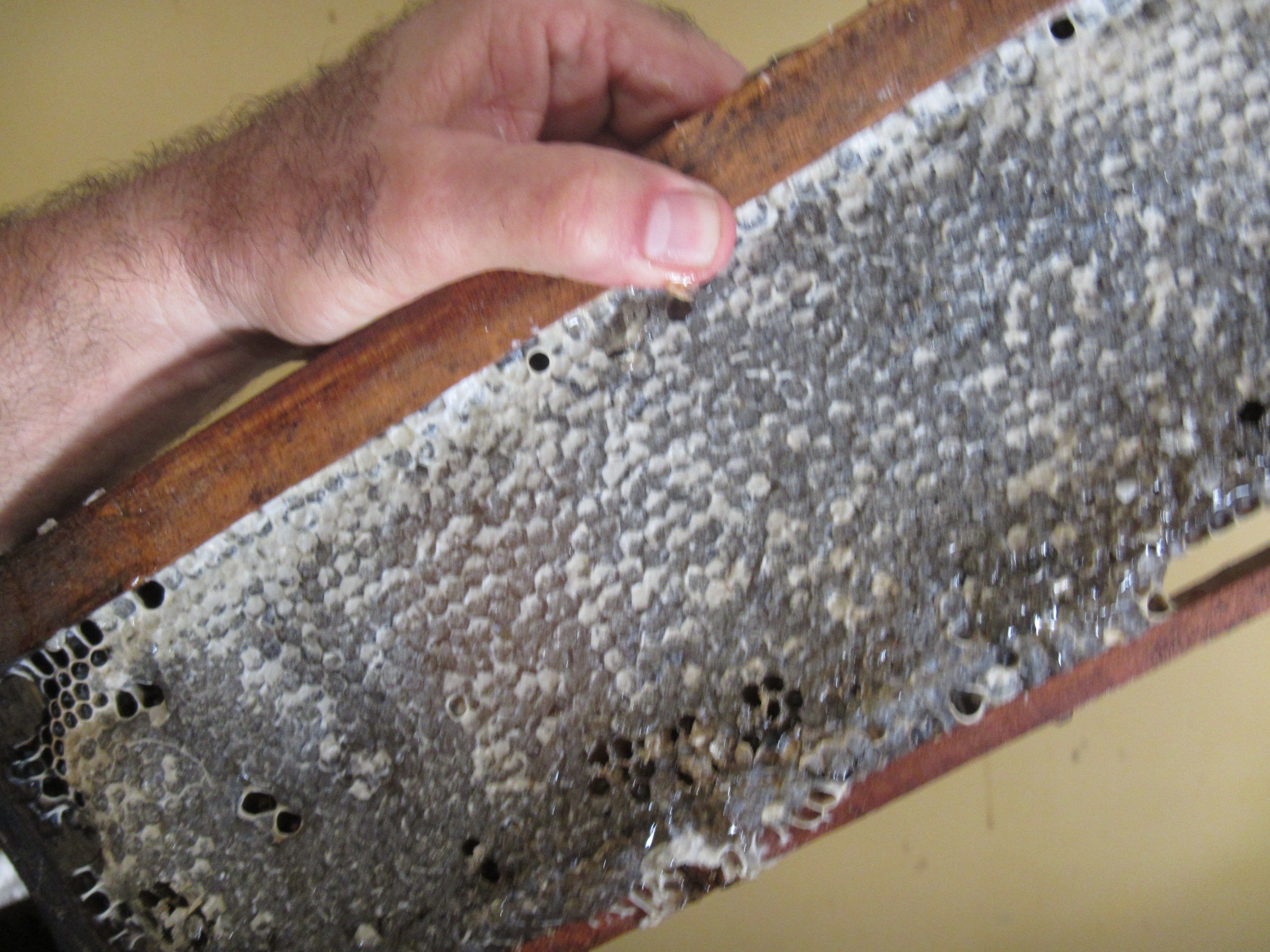
A close-up of a frame with the honey and wax attached to the wax sheet.
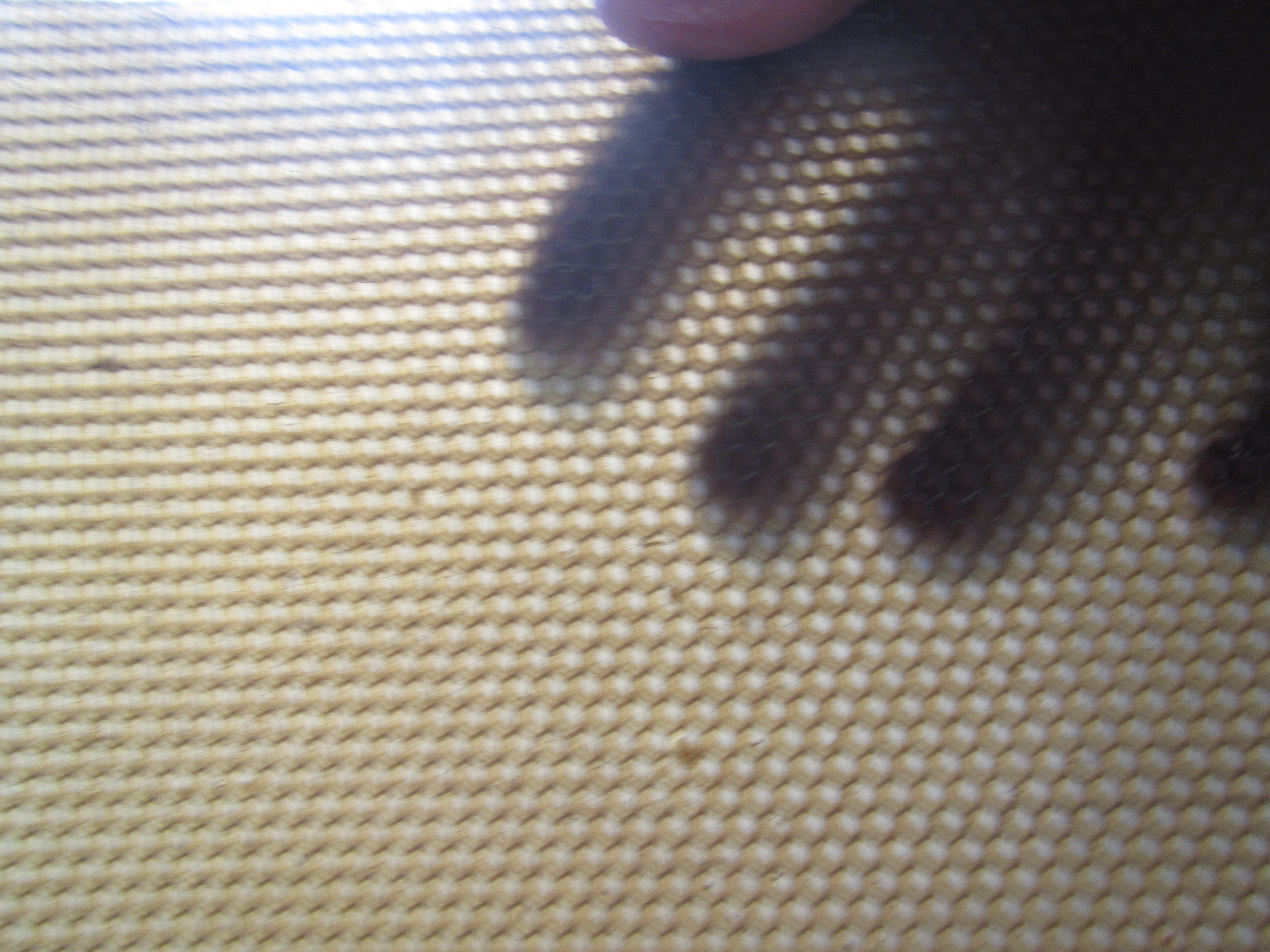
The wax sheet, wax as a by-product goes back into the hive to help with its foundation
Separating the honey from the wax
After scraping with a fork to break the seal, he places the frames into a machine, like a cylindrical vat, that is centrafused. The machine takes 32 trays that when the machine is turned on starts slow then goes fast spinning the honey out around the sides where it slides down and comes out via a funnel into a bucket. This goes into another container where the honey, which is heavier than wax, rises to the top and this pure honey is placed into jars.
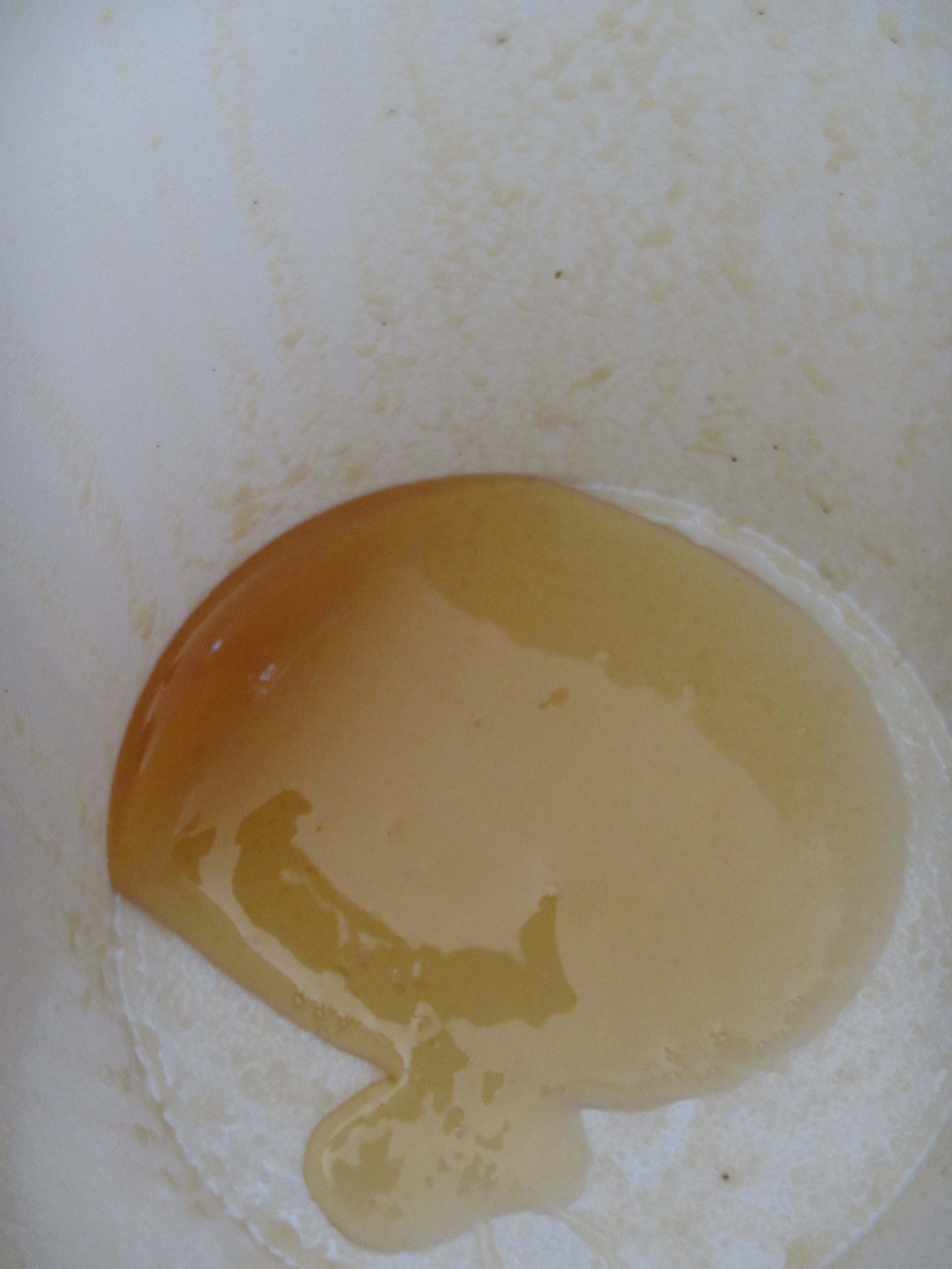
Beautiful pure honey separated from the wax
The wax is used as a by product, cleaning it by baking it in the sun and then sending it off to a factory for it to be used for candles etc. For the beekeeping process the wax goes back into the hive and is used as a foundation or into the frames for the bees to work on. In the summer when the eucalyptus is in full bloom it takes a bee around 17 days to fill a box with Peter working on a 2 box per hive system.
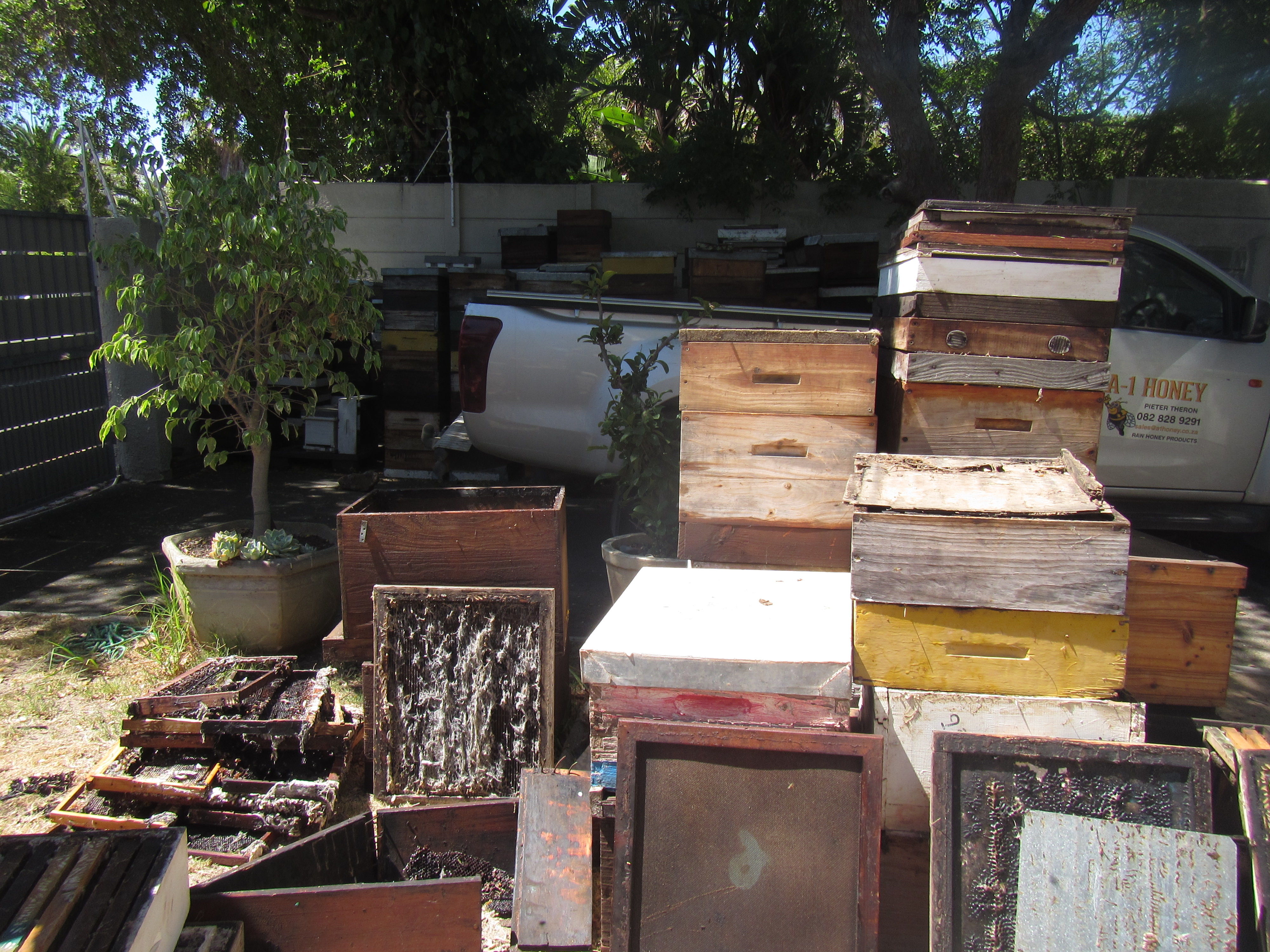
The maintenance area in Peter’s backyard
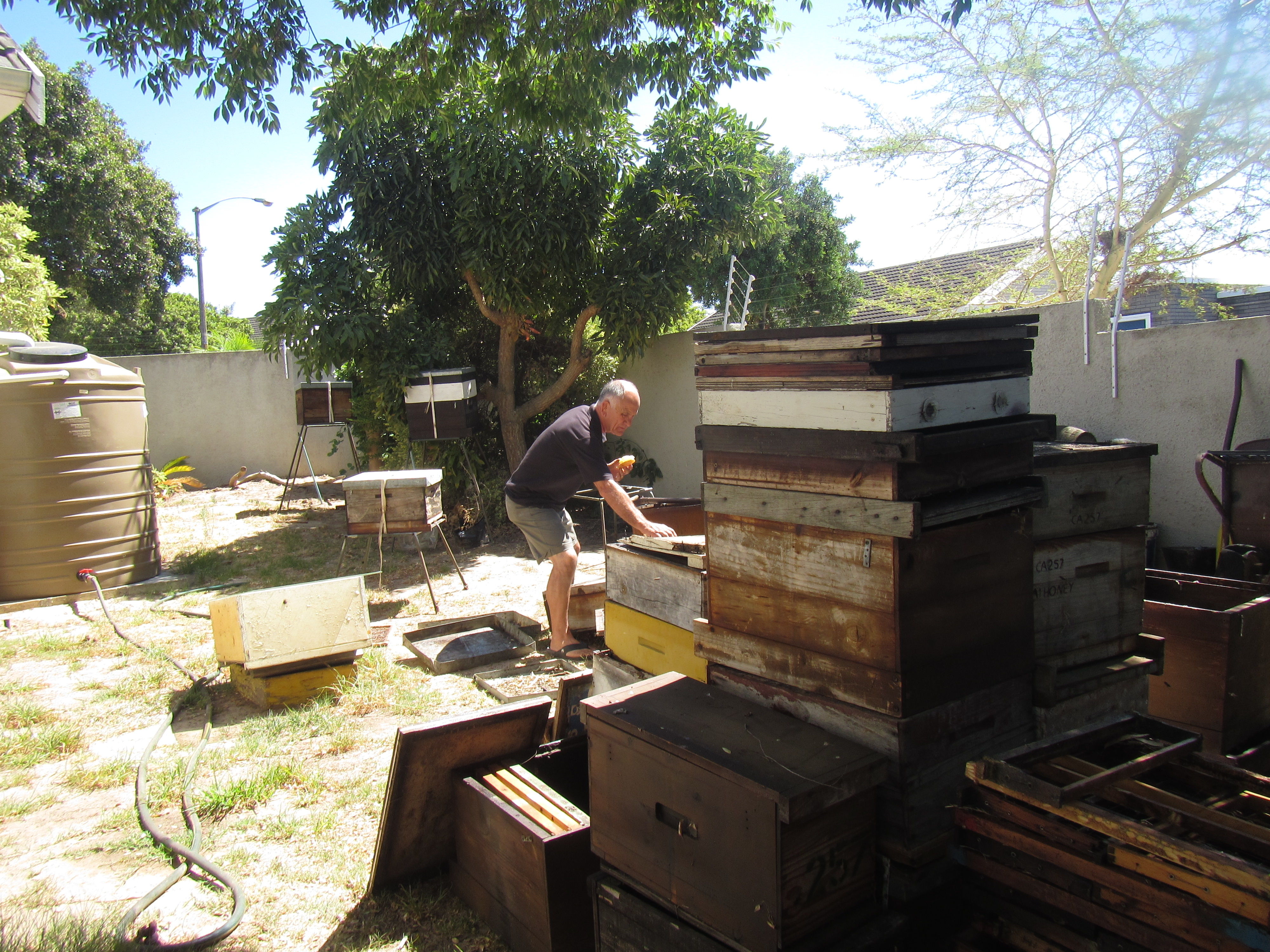
Peter cleaning the boxes
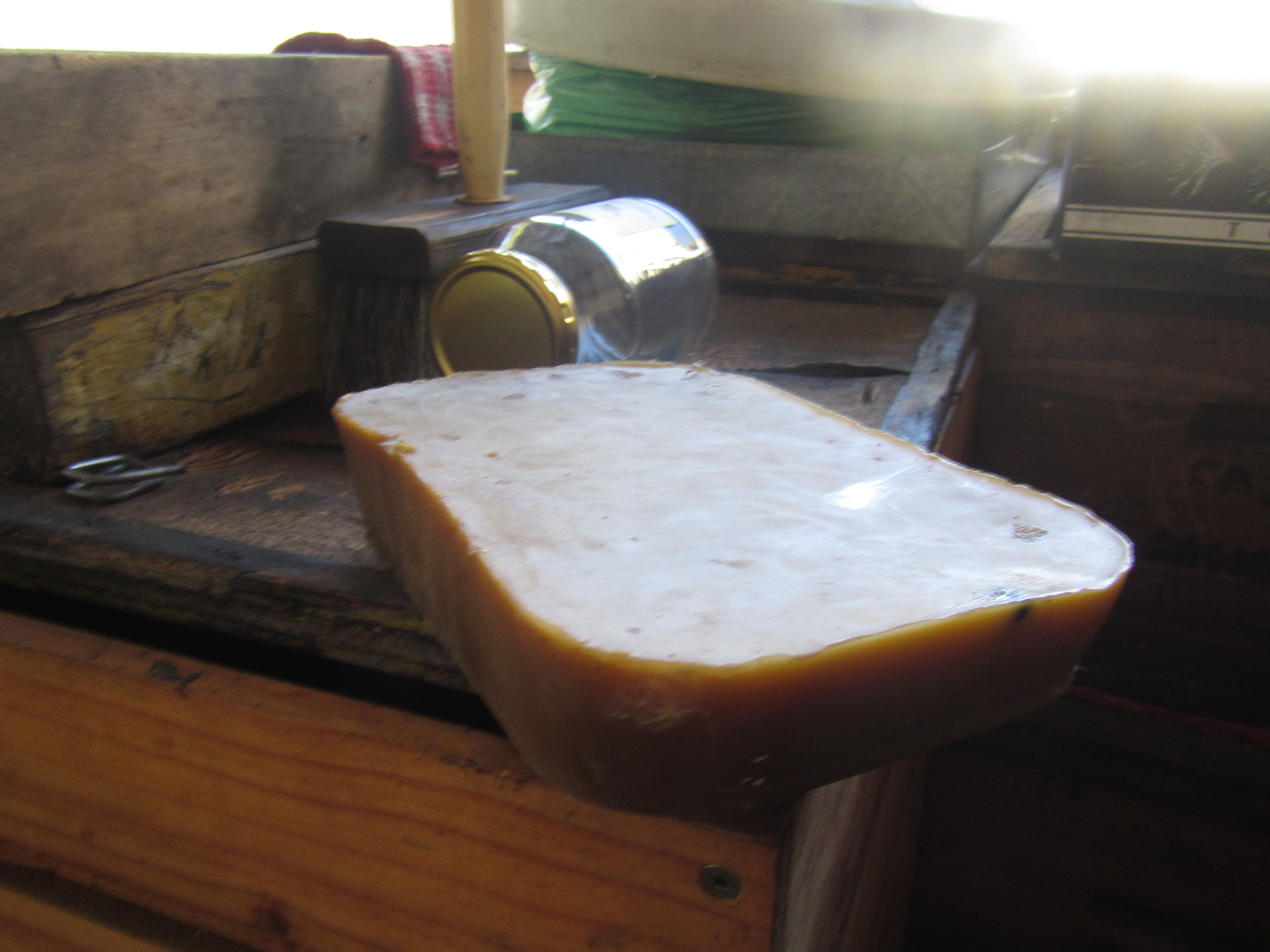
Beautiful wax finely baked!
How to combat disease?
One of the biggest fears is American Virola Disease that can wipe out colonies devastating a beekeepers livelihood. Antibiotics aren’t used at all in South Africa which is good for the consumer, maintaining the purity of the honey but it does mean a labour intensive process of cleaning the frames and boxes after harvesting the honey. Peter explains how they cook the frames to 160′ for 10 minutes in wax to clean any spores or traces of the disease before going back into the hive. The boxes can also go to HEPRO for irradiation as a way of preventing disease.
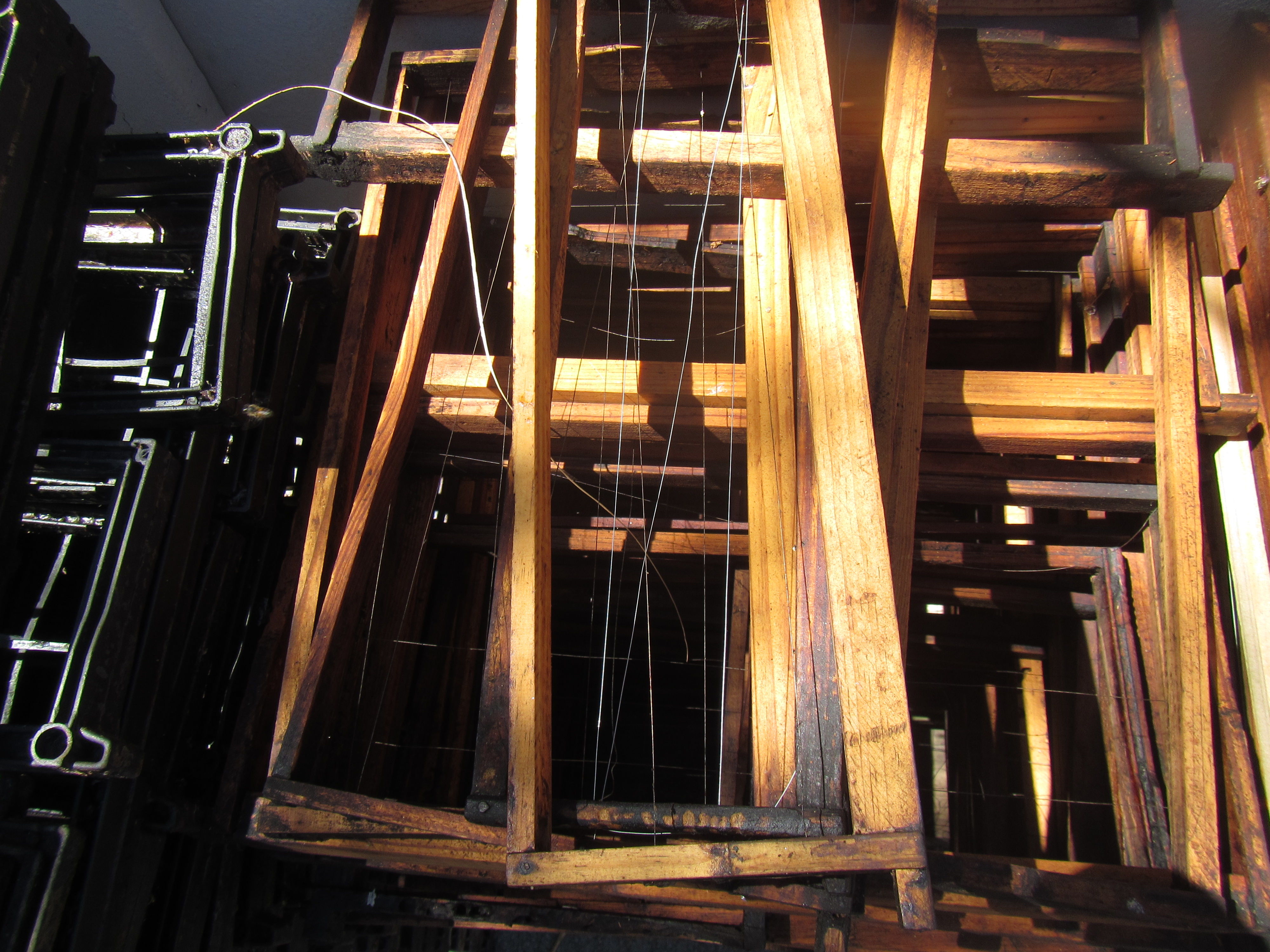
Frames ready for cleaning
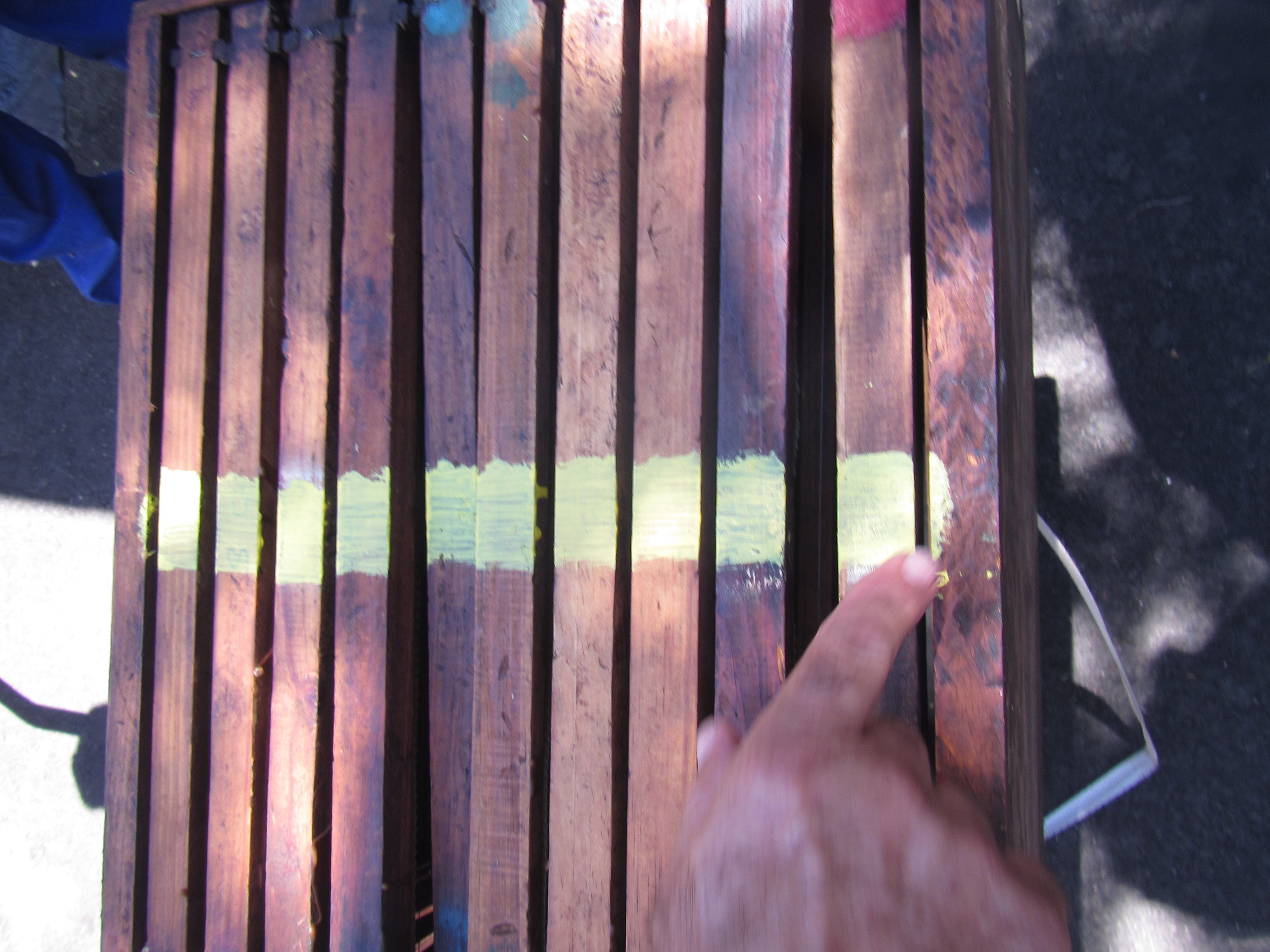
Peter colour codes his trays so he knows which year the boxes were placed in the hives and honey harvested
Lessons Learned
Never take a short cut else it comes back to bite you (or sting you).
How do you like to eat your honey?
Straight from the jar! I also like honey with fish like a nice fresh trout grilled with a honey glaze is pretty special. My wife uses honey a lot in baking and as I carry out blueberry pollination you cant beat fresh blueberries, plain yogurt and a drizzle of honey. That’s pretty perfect too.
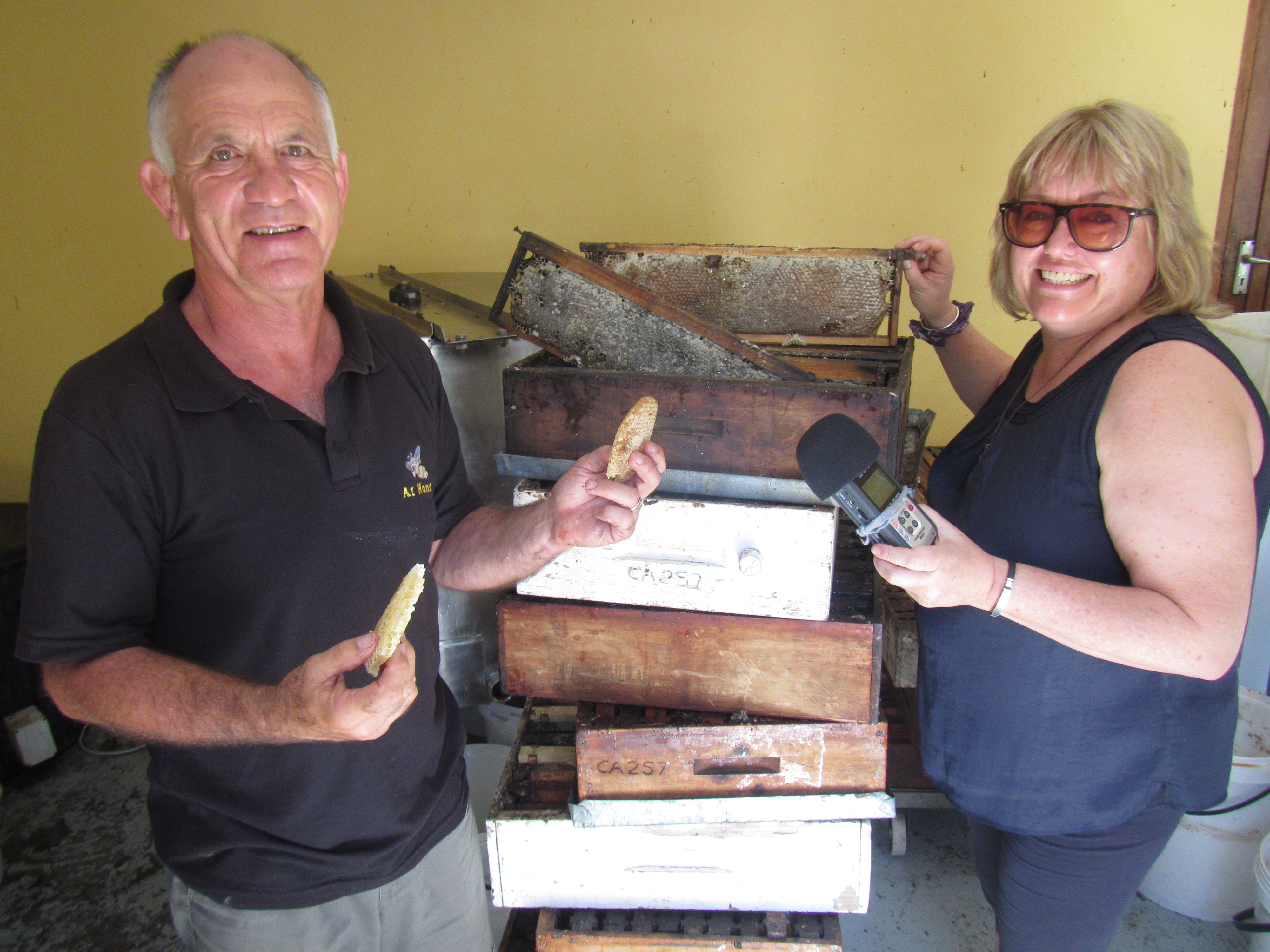
Suzanne Radford interviewing Peter for the honeyexplorer podcast and Peter offering a gift of honeycomb
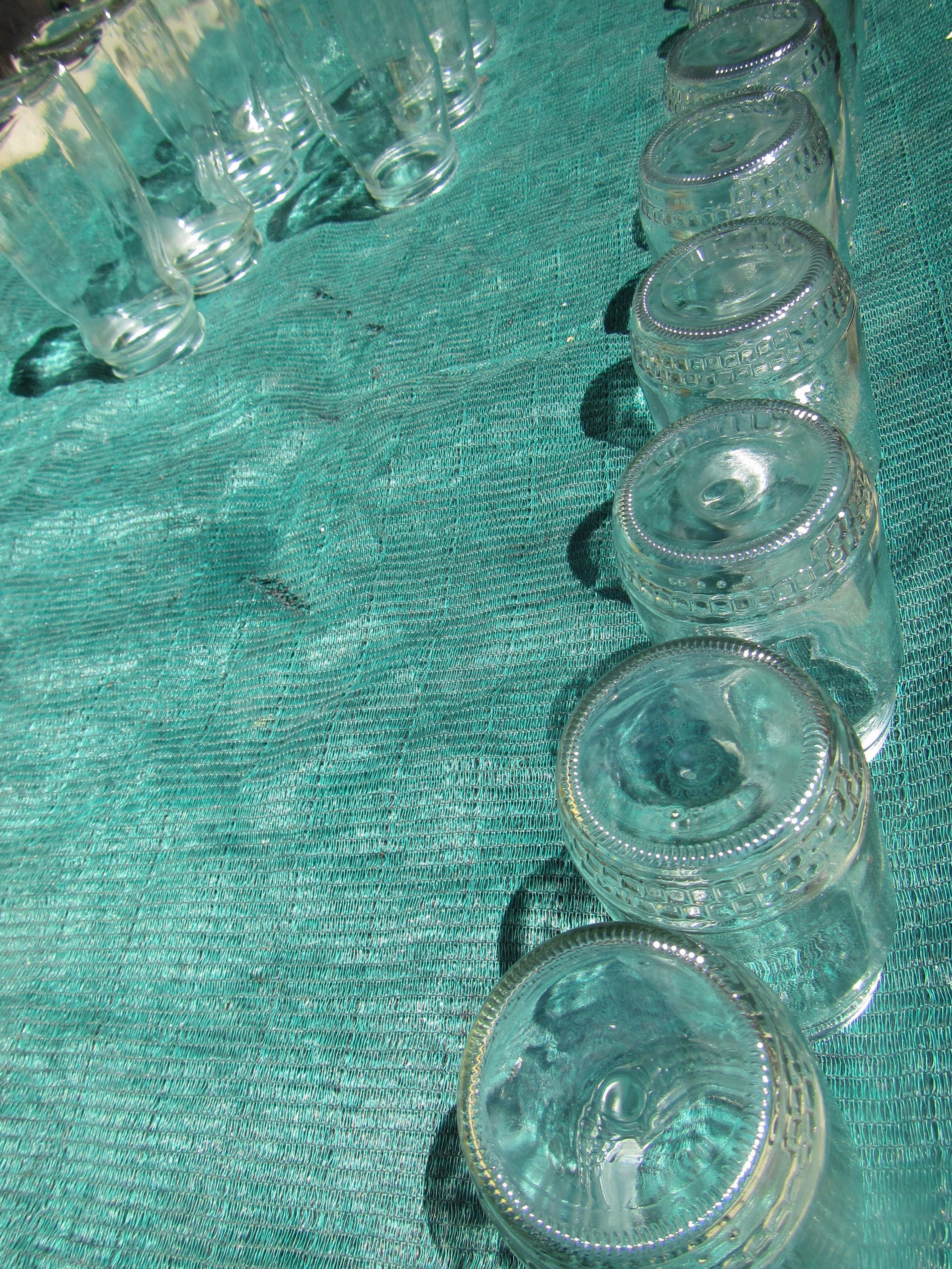
Jars standing to attention
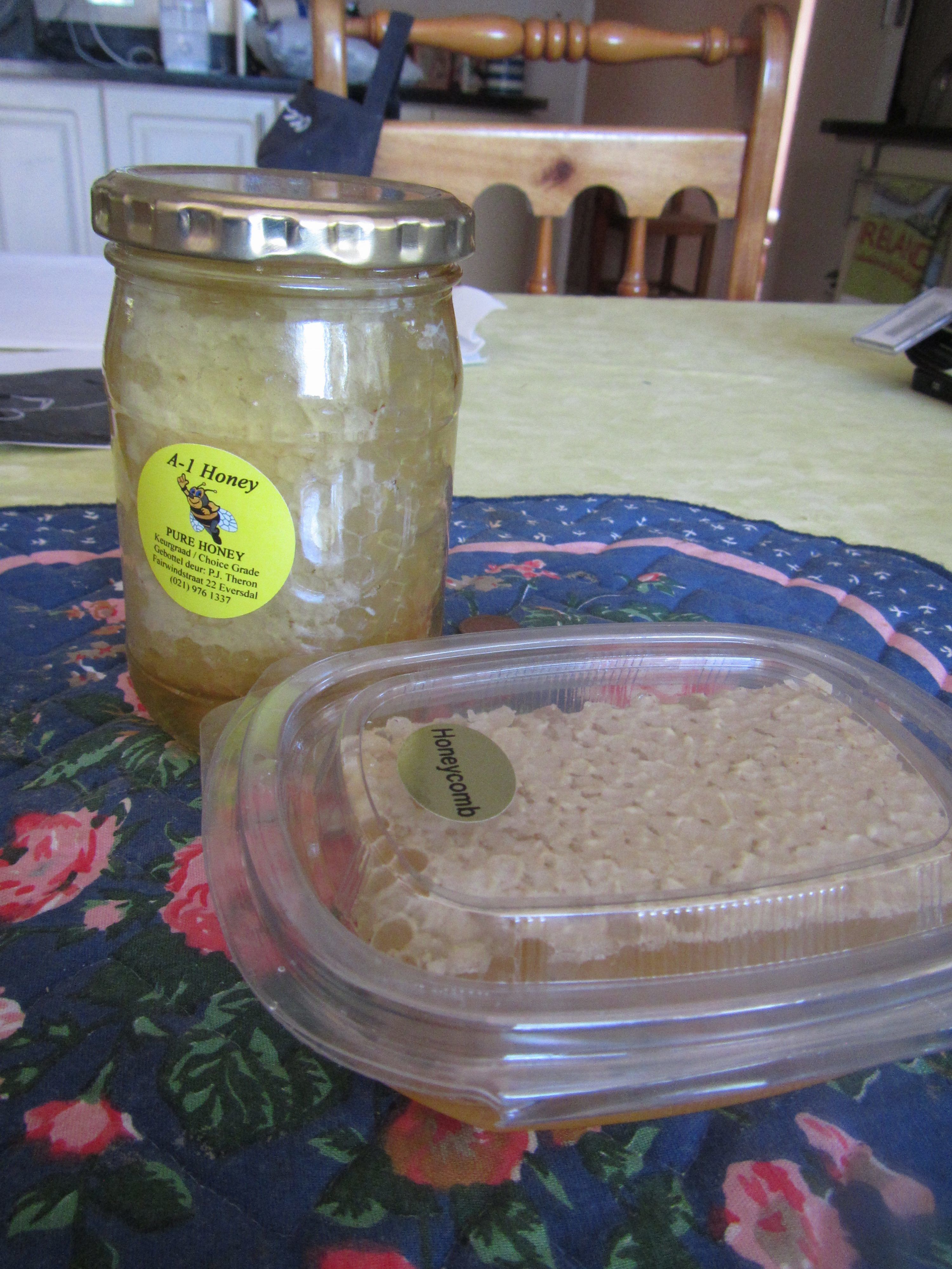
Ready to go!
Sign up for exclusive offers, recipes and the latest raw honey news.